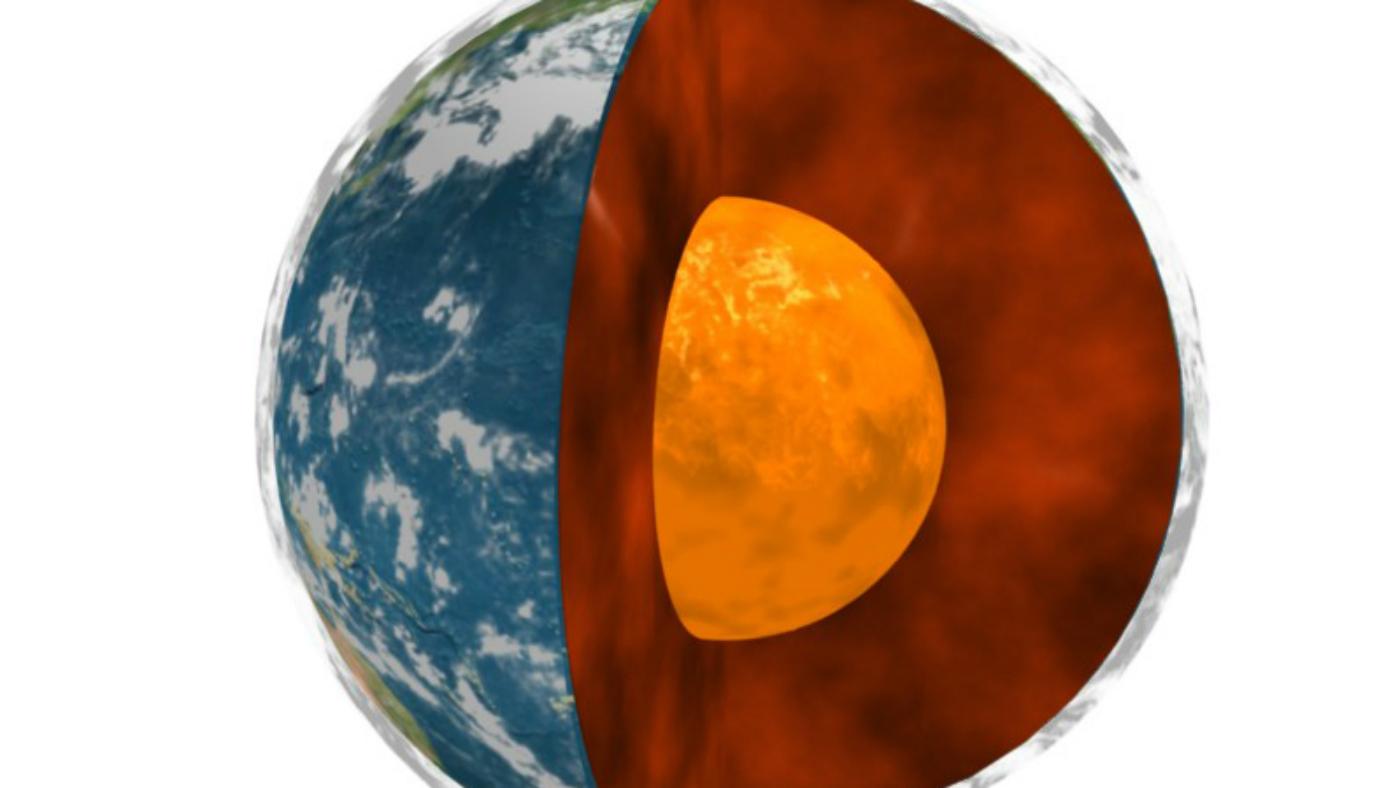Have scientists cracked the mystery of the Earth's core?
Researchers replicate intense pressure and heat at planet's heart to answer decades-old puzzle

Japanese scientists believe they have identified a mystery element that makes up part of the Earth's core.
The ball at the centre of our planet is composed primarily of iron and nickel, which together account for 95 per cent of its mass. What makes up the remaining five per cent has been a puzzle for decades.
However, after decades of searching, researchers at the University of Tohoku think they have the answer for some of it.
The Week
Escape your echo chamber. Get the facts behind the news, plus analysis from multiple perspectives.

Sign up for The Week's Free Newsletters
From our morning news briefing to a weekly Good News Newsletter, get the best of The Week delivered directly to your inbox.
From our morning news briefing to a weekly Good News Newsletter, get the best of The Week delivered directly to your inbox.
Lead scientist Professor Eiji Ohtani told the BBC: "We believe that silicon is a major element - about five per cent by weight could be silicon dissolved into the iron-nickel alloys."
Researchers recreated the intense pressures and 5400C heat found at the centre of the Earth on a mixture of iron, nickel and silicon. The resulting data matched observations of seismic activity near the Earth's core.
Understanding the exact composition of the centre of the planet could unlock valuable insights into how the Earth was formed. However, the core's inaccessible depth makes direct investigation impossible.
"The deepest oil well penetrates a mere six miles into the crust," National Geographic says. "The centre of the Earth is about 4,000 miles deeper."
A free daily email with the biggest news stories of the day – and the best features from TheWeek.com
Observing seismic waves has been the primary method of investigating the nature of the core since 1936, when Danish scientist Inge Lehmann first detected them emanating from near the centre of the Earth.
Researchers have since come to the conclusion the core is a 1,500mile-wide solid ball of iron and nickel, with at least one lighter element, such as silicon or oxygen. Ohtani said his team's research did not rule out the presence of oxygen or other elements also being present.
Professor Simon Redfern, from the University of Cambridge, told the BBC the experiments could provide a "window into what Earth's interior was like soon after it first formed, 4.5 billion years ago, when the core first started to separate from the rocky parts of Earth".
-
 Four Seasons Seoul: a fascinating blend of old and new in South Korea
Four Seasons Seoul: a fascinating blend of old and new in South KoreaThe Week Recommends Located right in the heart of the action, this classy hotel is the perfect base to explore the capital
-
 How to make the most of chestnuts
How to make the most of chestnutsThe Week Recommends These versatile nuts have way more to offer than Nat King Cole ever let on
-
 Deaths for children under 5 have gone up for the first time this century
Deaths for children under 5 have gone up for the first time this centuryUnder the radar Poor funding is the culprit
-
 Home Office worker accused of spiking mistress’s drink with abortion drug
Home Office worker accused of spiking mistress’s drink with abortion drugSpeed Read Darren Burke had failed to convince his girlfriend to terminate pregnancy
-
 In hock to Moscow: exploring Germany’s woeful energy policy
In hock to Moscow: exploring Germany’s woeful energy policySpeed Read Don’t expect Berlin to wean itself off Russian gas any time soon
-
 Were Covid restrictions dropped too soon?
Were Covid restrictions dropped too soon?Speed Read ‘Living with Covid’ is already proving problematic – just look at the travel chaos this week
-
 Inclusive Britain: a new strategy for tackling racism in the UK
Inclusive Britain: a new strategy for tackling racism in the UKSpeed Read Government has revealed action plan setting out 74 steps that ministers will take
-
 Sandy Hook families vs. Remington: a small victory over the gunmakers
Sandy Hook families vs. Remington: a small victory over the gunmakersSpeed Read Last week the families settled a lawsuit for $73m against the manufacturer
-
 Farmers vs. walkers: the battle over ‘Britain’s green and pleasant land’
Farmers vs. walkers: the battle over ‘Britain’s green and pleasant land’Speed Read Updated Countryside Code tells farmers: ‘be nice, say hello, share the space’
-
 Motherhood: why are we putting it off?
Motherhood: why are we putting it off?Speed Read Stats show around 50% of women in England and Wales now don’t have children by 30
-
 Anti-Semitism in America: a case of double standards?
Anti-Semitism in America: a case of double standards?Speed Read Officials were strikingly reluctant to link Texas synagogue attack to anti-Semitism